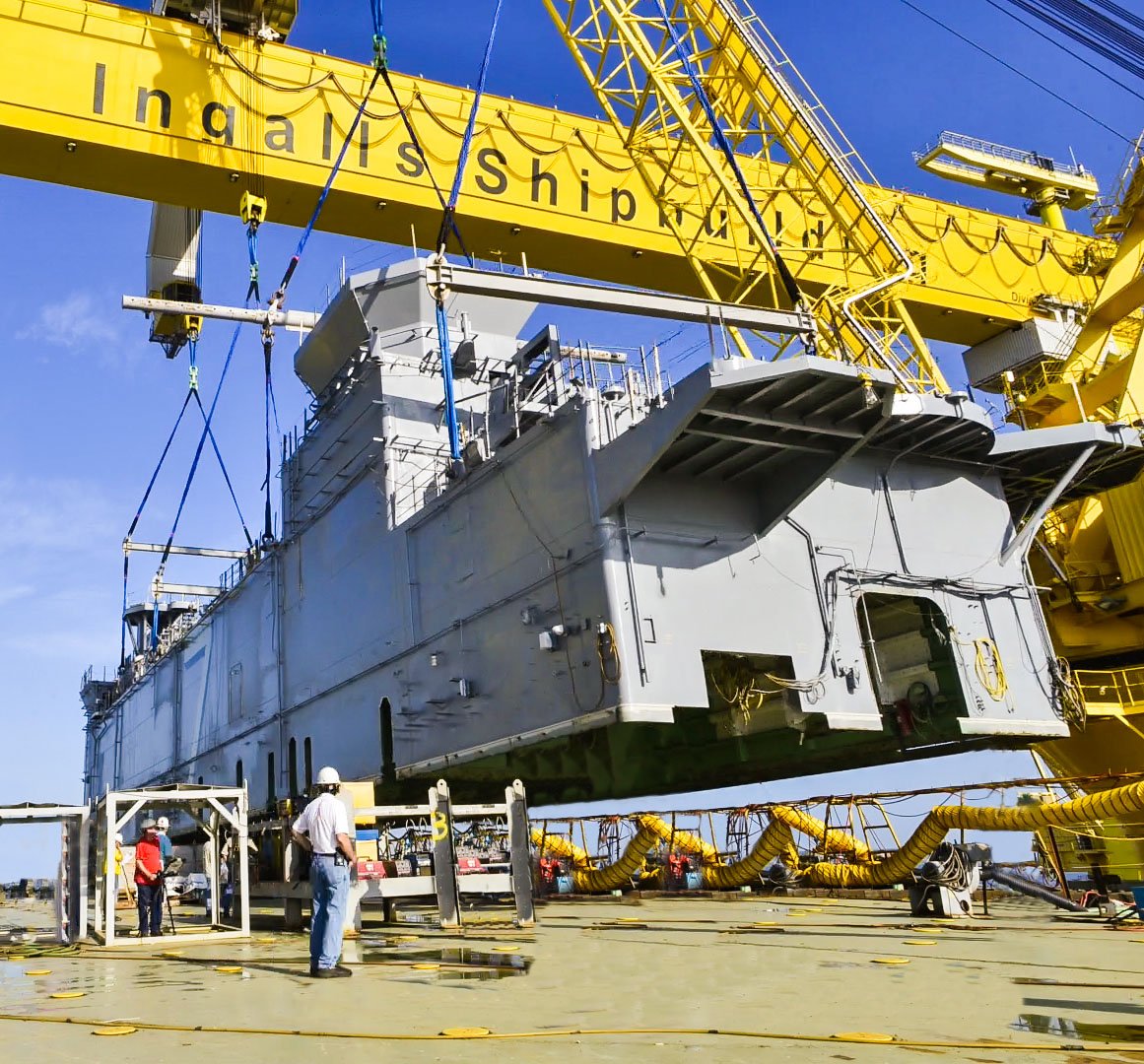
The U.S. Coast Guard offered industry the potential for a multi-ship, multi-year, multi-billion-dollar program in its heavy icebreaker competition – but funding uncertainties gave some of the nation’s largest shipbuilders cold feet when it came time to bid.
Mike Petters, chief executive of Huntington Ingalls Industries, said his company opted to pass on bidding for the Polar Security Program, even after being involved in the program early on, because of concerns over how it would fit into HII’s workload. Petters addressed the Polar Security Cutter contract and other shipbuilding issues during a conference call with analysts to discuss the company’s first quarter financial results.
“As the program evolved,” Petters said, “it appeared to us that the alignment of our capacity, the budget, and the requirements just didn’t’ really match up well for us.”
HII wasn’t alone in passing on the Polar Security Cutter project. Before the Coast Guard released its request for proposals in 2018, General Dynamics officials had told USNI News they were interested in the program. However, like HII, when it came time to bid General Dynamics also passed, according to company officials.
On April 24, the Coast Guard awarded VT Halter Marine Inc. a $745-million detailed design and construction contract to build the first-in-class heavy icebreaker.
The Polar Security Cutter program’s path to being funding during the past year highlights the current risks shipbuilders face when planning bids for new projects.
A year ago, when the Coast Guard released its requests for proposals, Coast Guard officials expected five shipbuilders to bid on the program, USNI News previously reported.
However, during the summer the Polar Security Cutter’s path to becoming a funded program hit a wall. The Senate appropriated $755 million for the program, but the House of Representatives’ budget zeroed out a variety of programs, including the Polar Security Cutter, to provide $5 billion to build a wall along the U.S. border with Mexico. For months, until Congress passed a budget earlier this year, the contracting process was frozen.
Petters told analysts Thursday morning, “while we stayed involved technically, we made (the Polar Security Cutter) much less of a priority for our business.”
As for new programs coming, notably the Navy’s new future frigate (FFG(X)), Petters said HII is “intensely interested” but warned analysts the current spending-friendly atmosphere on Capitol Hill could quickly change, causing the Navy to scale back the scope of programs.
In the case of the frigate, Petters said the Navy, ahead of next year’s expected contract award, already appears to be preparing the industry for a possibly smaller program.
“As far as how that program is going to come out, there have been some changes, from a big contract for 20 ships to now maybe something different from that.”
The Navy’s Fiscal Year 2020 budget requests $1.3 billion to purchase its first-in-class guided-missile frigate, for a program now calling for buying nine hulls by 2024. Along with HII, the Navy awarded Austal USA, Lockheed Martin, Fincantieri Marine and General Dynamics Bath Iron Works each $15-million conceptual design contracts to hone their frigate designs.
Still, Petters said HII is preparing for the possibility of being awarded the frigate contract. The company already invested in its Ingalls Shipbuilding yard to support the frigate program. An award would come just as HII is winding down its production of the Coast Guard’s National Security Cutter.
“So, from a capacity standpoint, it feathers right into our business in a very productive way,” Petters said of a possible frigate award. “It’s a Coast Guard program kind of moving toward a Navy program, so I’d hate to say that that’s a hot production line, but it’s pretty warm.”
Taking a longer-term view, Petters said for most of his career the Navy’s shipbuilding budget, formally known as the Navy’s Shipbuilding and Conversion (SCN) appropriation account, hovered around $15 billion. During the past few years, the Navy increased its shipbuilding budget to between $24 billion and $25 billion.
“The question for us is, is this the new standard, are we going to be in this 23, 24 or 25 (billion dollar) range for a while, or are we going to at some point fall to that $15 billion level,” Petters said. “And the reason that is so important for us is because it all comes down to how does Columbia (ballistic missile submarine program) get paid for.”
An SCN appropriation of between $24 billion and $25 billion means there’s enough money to fund the Columbia-class submarine and the other programs HII is working on, Petters said. A higher SCN appropriation level would send industry the message that a second frigate block-buy could realistically occur after the initial contract award. Industry would know a block buy was possible for the platform the Navy pursues once the current Arleigh Burke Flight III guided-missile destroyer block buy expires. And there would be less uncertainty about the amphibious warship program, Petters said.
“We want to see that there’s going to be a sustained commitment to this current level of SCN account, for us to believe that the follow-on programs are going to get funded on time and efficiently, supporting hot production lines, supporting labor buildups, supporting the rhythm of the industry,” Petters said.
“At this point we’re hopeful, is the best way to put it,” Petters said. “But we’ve been here for a while, and we know these things can be cyclic.”





